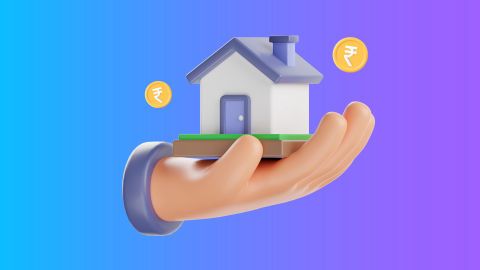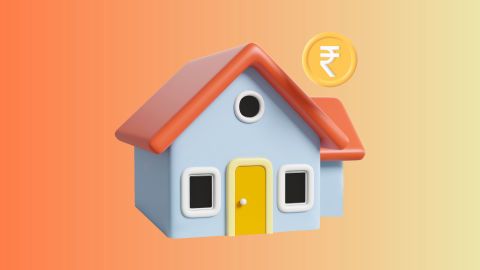Are you curious about the dynamics of 30 year mortgage rates and how they can influence your financial planning? If yes, you are at the right place. Understanding mortgage rates is essential for anyone looking to secure a mortgage loan. Over a period of 30 years, these rates can significantly impact the total amount you will repay. In this article, we will take you through the basics of 30 year mortgage rates, their historical trends, and current market analysis. We will also explore how these rates affect financial decisions and compare them with other mortgage terms. If you are considering a long-term financial commitment, such as a Bajaj Finserv Loan Against Property, this information will be valuable. You can also check the fees and charges associated with such loans and features to make an informed decision.
What are 30-year mortgage rates?
A 30 year mortgage rate refers to the interest rate on a mortgage that will be paid off over a span of 30 years. This is one of the most common mortgage terms chosen by homeowners because it typically offers lower monthly payments compared to shorter-term loans. The fixed nature of these rates provides predictability and stability, allowing homeowners to budget their finances effectively.
Historical trends in 30-year mortgage rates
Understanding the historical trends of 30 year mortgage rates can provide valuable insights. Over the decades, these rates have fluctuated due to various economic factors. For instance, in the 1980s, the rates were exceptionally high, reaching double digits. However, in recent years, we have seen relatively lower rates. This trend reflects the broader economic conditions, including inflation rates, monetary policies, and overall economic growth. For a more detailed look into how mortgage rates in India have evolved.
Historical mortgage rates by decade
Years |
Minimum Mortgage Rate |
Maximum Mortgage Rate |
Median Mortgage Rate |
1971-1979 |
7.23% |
12.90% |
8.89% |
1980-1989 |
9.03% |
18.63% |
12.82% |
1990-1999 |
6.49% |
10.67% |
7.88% |
2000-2009 |
4.71% |
8.64% |
6.18% |
2010-2019 |
3.31% |
5.21% |
4.03% |
2020-Present |
2.65% |
7.79% |
4.55% |
Current market analysis
Currently, the market for 30 year mortgage rates is influenced by several factors. Economic conditions, central bank policies, and global financial trends play significant roles. In India, these rates are relatively lower than in past decades, making it an attractive time for potential homeowners to secure a mortgage. If you are considering a long-term investment, a loan against property with Bajaj Finance can be a strategic financial move, providing you with the necessary funds at competitive rates.
Impact of 30-year mortgage rates
The impact of 30 year mortgage rates on your financial health is substantial. Lower rates mean lower monthly payments, which can free up more of your income for other expenses or investments. Conversely, higher rates can increase your monthly payments, making it more challenging to manage your budget. It is essential to consider these rates when planning your finances, as they will influence your financial commitments for three decades.
Comparison with other mortgage terms
When comparing 30 year mortgage rates with other terms, several differences stand out. Shorter-term mortgages, such as 15-year loans, typically come with higher monthly payments but lower overall interest costs. On the other hand, longer-term loans offer lower monthly payments but can result in higher total interest paid over the life of the loan.
Here is a simple table to illustrate this comparison:
| Term length | Monthly payment | Total interest paid |
| 15 years | Higher | Lower |
| 30 years | Lower | Higher |
This comparison highlights why many homeowners opt for 30 year mortgages – the lower monthly payments provide more flexibility in their budgets.
In conclusion, 30 year mortgage rates are a critical factor in long-term financial planning. Understanding these rates, their historical trends, and current market conditions can help you make informed decisions. If you are considering a major investment or securing a loan against property, being aware of these rates is crucial. Make sure to explore all aspects, including eligibility and documents, before making a decision. Remember, informed choices today can lead to financial stability in the future.
How to get the best 30-year mortgage rate?
1. Maintain a high credit score
Aim for a credit score of 750 or higher to qualify for the most competitive rates.
2. Save for a larger down payment
A higher down payment (20% or more) reduces the lender’s risk, often leading to lower rates.
3. Compare multiple lenders
Shop around with different banks, credit unions, and online lenders to find the best offers.
4. Choose the right loan type
Fixed-rate loans may be more predictable, but consider adjustable-rate mortgages if rates are expected to fall.
5. Lock in your rate
When rates are favorable, secure them with a rate lock to avoid fluctuations.
6. Reduce debt-to-income ratio
Pay off outstanding debts to improve your financial profile and negotiation leverage.
7. Monitor market trends
Keep an eye on economic indicators and mortgage trends to time your application strategically.
Pros and Cons of a 30-Year Mortgage
Pros:
Lower monthly payments: Spread over 30 years, payments are more affordable, making homeownership accessible.
Flexibility in budgeting: Lower instalments free up cash for other investments or expenses.
Predictable costs: Fixed-rate options ensure consistent payments, simplifying long-term financial planning.
Tax benefits: Interest paid on the mortgage may be tax-deductible, offering potential savings.
Cons:
Higher total interest: Longer terms mean paying more interest over the loan’s duration.
Slower equity build-up: It takes longer to own your home outright due to extended repayment.
Higher interest rates: Compared to shorter-term mortgages, 30-year loans often carry slightly higher rates.
Risk of over-borrowing: Low monthly payments may tempt borrowers to take on larger loans than needed.




